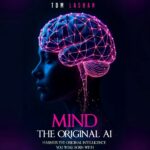In a fast-paced world dominated by multitasking, distractions, and constant digital stimulation, the concept of living in the moment holds increasing appeal. At the center of this experience lies the idea of “flow,” a psychological state where one becomes fully immersed in a task, experiencing clarity, focus, and often, enjoyment. Embracing flow can lead to deeper satisfaction in daily life, improved well-being, and a more grounded sense of purpose. Understanding how to identify and increase moments of flow helps individuals cultivate mindfulness and live with intention.
Read also: Creating Surprise with the Unexpected: A Strategic Guide to Captivating Audiences
What is “Flow”? The Psychology of Optimal Experience
Flow is a term coined by psychologist Mihaly Csikszentmihalyi to describe the mental state in which a person becomes so involved in an activity that nothing else seems to matter. Time often feels as if it slows down or disappears entirely. There is an alignment between challenge and skill, and the individual feels energized, focused, and in control.
This state is not limited to any one type of activity. It can arise while painting, writing, coding, gardening, playing an instrument, or even engaging in thoughtful conversation. What distinguishes flow is the deep engagement and absence of external distractions. The mind is fully present, attention is undivided, and the activity becomes intrinsically rewarding.
How Flow Connects to Ikigai
Ikigai is a Japanese concept that roughly translates to “reason for being.” It combines passion, mission, vocation, and profession into a single, fulfilling path. Flow plays a significant role in identifying and sustaining one’s ikigai. When individuals engage in activities that consistently put them in a flow state, they often discover elements of their purpose and intrinsic motivation.
The connection lies in alignment. Both flow and ikigai involve doing something that feels naturally rewarding, is aligned with personal strengths, and contributes to a meaningful existence. When someone consistently finds flow in particular areas of life—be it through teaching, creating, or problem-solving—these patterns can point toward a deeper sense of direction and identity.
Ikigai encourages living with balance and intention, and flow supports that by promoting full engagement in the present moment. Together, they help individuals find satisfaction not through outcome alone, but through the joy of the process itself.
Identifying Activities That Put You in Flow
Recognizing the specific conditions that lead to flow is an important step toward cultivating it more regularly. Typically, flow occurs when the task at hand strikes a balance between being challenging enough to demand full concentration and being manageable within the individual’s skill level. If the task is too easy, boredom arises. If it is too difficult, anxiety takes over.
To identify flow-inducing activities, individuals can reflect on moments when time seemed to disappear, when focus felt effortless, and when there was a sense of purpose and energy. These could range from creative pursuits to analytical problem-solving or interpersonal activities.
Patterns often emerge when reflecting on these experiences. Some may find flow in solitary activities that require concentration, while others may discover it in dynamic, collaborative environments. The goal is not to limit oneself to a single flow activity but to observe the common features across different experiences and prioritize them in daily life.
Strategies to Increase Flow in Daily Life
Flow is not limited to extraordinary moments or creative professionals. With intentional effort, it can be integrated into ordinary routines. The first strategy is to set clear goals for the task being performed. Clarity in purpose helps the mind focus and reduces mental wandering.
Breaking larger tasks into manageable segments also helps maintain engagement. When progress is visible and tangible, motivation increases. Another effective approach is minimizing multitasking. By dedicating uninterrupted time to one activity, the conditions for flow become more accessible.
Matching the task’s difficulty to one’s skill level is essential. Seeking slight increases in difficulty can keep the mind stimulated and prevent stagnation. Over time, as skills improve, activities can become more challenging without breaking the flow.
Incorporating regular periods of focused work, physical movement, and reflective breaks helps reinforce a cycle of flow. Maintaining consistency while allowing for creativity and variation supports a healthy rhythm in both personal and professional settings.
Reducing Distractions and Deepening Presence
Modern environments are filled with interruptions—from digital notifications to background noise and time pressures. Reducing these distractions is critical for enabling flow. Creating a dedicated space for focused work or meaningful activity can serve as a physical cue to enter a state of presence.
Mindfulness practices, such as deep breathing or short meditative pauses, can also enhance one’s capacity to stay present. When individuals are mentally anchored in the current moment, it becomes easier to resist distractions and engage deeply with the task at hand.
The use of technology, when intentional, can aid flow rather than disrupt it. Tools that block notifications, track time, or provide structure can support a more focused experience. However, it is the mindset of presence and intentionality that ultimately allows flow to flourish.
In conclusion, living in the moment through the power of flow is both a skill and a mindset. By identifying the activities that naturally engage attention, aligning those with deeper values, and creating supportive conditions, individuals can bring more clarity, satisfaction, and purpose to their daily lives. In a world often driven by urgency and distraction, flow offers a path back to presence, fulfillment, and meaningful engagement.
Read also: Understanding Ikigai: Exploring the Meaning and Importance of Life’s Purpose
















